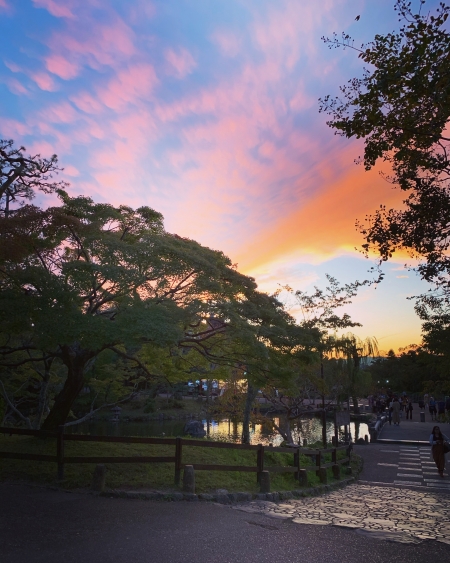建築にできること
安全地帯であることをただ構築すると、それはシェルターになる。誰もシェルターには住みたいとは思わないだろう。非常事態の時には致し方ないが、日常的にはそこに居たいとは思わない。
それに安全地帯かどうかは、丈夫さとか、頑丈さとか、備えがあるからとか、では決まらないように思う。心の問題、そこが自分にとって巣とも呼べるような安心感が得られる場所であるかどうか。
それを建築的に表現すると、どうなるだろうか。
ひとつのやり方として、巣と巣以外の場所の違いを明確にして、その違いを拡張する。
例えば、棋士の羽生善治さんは対局でホテルや旅館などに滞在する時は、まず、部屋に自分の私物をたくさん置いて、精神的に落ち着く空間にするらしい。
寝食や身支度は自分の家以外でもできるが、そこの空間にあるものは仮初のもの、見慣れないもの、それが安心感を奪うのかもしれない。
だから、慣れというのもあるだろう。
私の亡くなった祖母は、最期の方は特養に入居していて、たまに一時帰宅をしていたが、特養へ戻ることを「帰る」と言っていた。特養がすでに自分の家と同等のもの、巣のような感覚になっていたのだと思う。
時間が巣にしてくれる、住めば都だとしたら、建築的には何もする必要がないのか、それでも建築的に何か表現できる可能性があるのか。
慣れを紐解いてみる。慣れとはどういうことか、それは空間や空間にある物に時間をかけてその人なりの物語ができることだろう、それは誰にもわからないその人だけの文字通り「物」が「語」る何かがあるのだろう。
しかし、建築にはその物語自体を設計の段階からつくることはできない。なぜなら、その物語は建築が完成後に、その建築に身を置く人がつくる物だからだし、その物語自体を設計の段階で予想して仕向けてしまうのは、あらゆる物語の可能性がある段階でその芽を摘む行為に思える。
ならば、建築にできることは、その「物」が「語」ることを誘発するだけかもしれない。それも陳腐な物語ではなくて、しかし、高尚である必要もなく、日常に即した、誰にでも理解できて、誰でも持つことができる物語、それは見過ごしてしまう位微かなことかもしれない、特別ではなく普通だから、だが、その位のことでないと毎日毎日、物語を紡ぐことはできず、その人に浸透しないだろう。
決して特別なことでは無くて、普通に今そこにある「物」が「語」ることに気がつく日常を建築が誘発する、それは想像させること、それが安心感を与え、その場所が安全地帯になる。
"What you can do in architecture"
If you just build a safety zone, it becomes a shelter. No one will want to live in a shelter. I don't want to be there in an emergency, but I don't want to be there on a daily basis.
And I don't think whether it's a safe zone depends on whether it is strong, sturdy, or prepared. Whether it is a place where you can get a peace of mind that can be called a nest for you.
What happens when we express it architecturally?
One way is to clarify the difference between the nest and the place other than the nest and extend the difference.
For example, when you stay at a hotel or ryokan in a game, Mr. Zenji Hanyu, you seem to have a lot of personal belongings in the room to make it a spiritually calm space.
You can sleep and eat outside your own home, but what is in the space is a temporary one, something you are unfamiliar with, and it may deprive you of security.
So there will be some familiarity.
My deceased grandmother, who was at the end of the period, was in Toyo, and occasionally returned home, but said that returning to Toyo was "going home." I think that the special treatment was already the same as my house, like a nest.
If time is a nest, or if you live in a city, is there anything you need to do architecturally, or can you still express something architecturally?
Try to get used to it. What does it mean to be used to it? It will be that you can take time to space and things in space, and you will be able to tell the story of that person, that is something that only "things" literally "speak" to that person that no one knows There will be.
However, in architecture, the story itself cannot be created from the design stage. This is because the story is created by the person who puts it in the building after the construction is complete, and the story itself is predicted at the design stage and directed at the stage where all the stories are possible. It seems to be the act of picking buds.
So what can be built may only trigger that "thing" "talks". It's not a stale story, but it doesn't have to be lofty, it's a daily story that anyone can understand and have, and it may be a little overlooked, It's normal, not special, but if it's not that much, you won't be able to spin the story every day, and it won't penetrate the person.
It's never a special thing, and it's an architecture that induces everyday life when you notice that "things" there are "speaking". It makes you imagine, it gives you a sense of security, and the place becomes a safe zone. Become.

